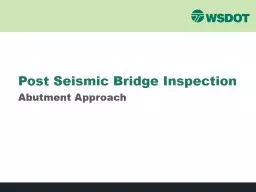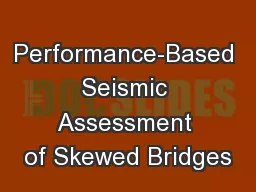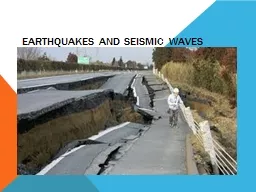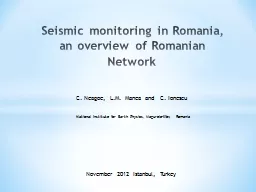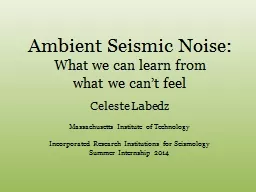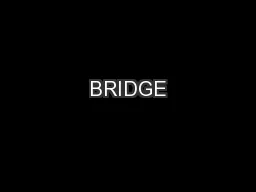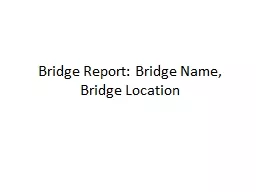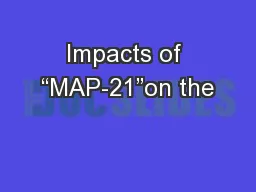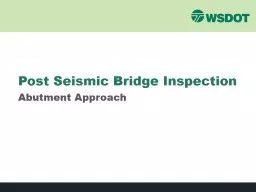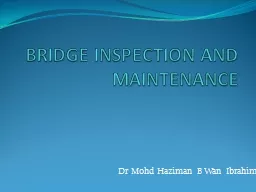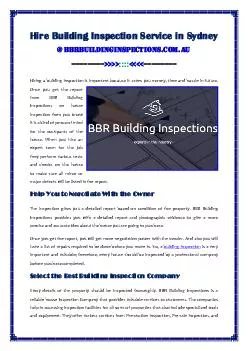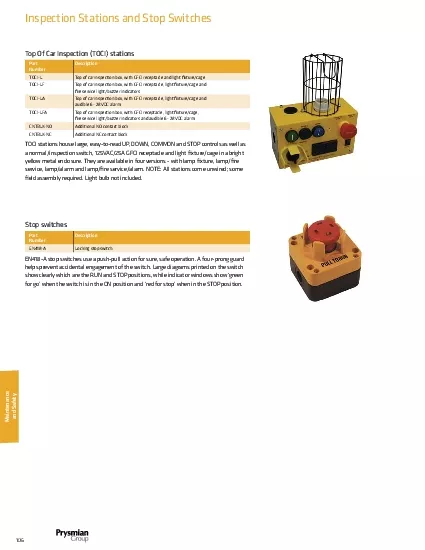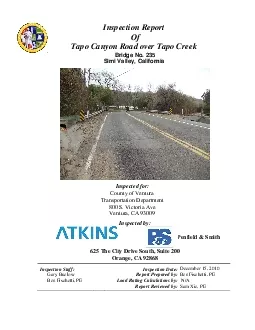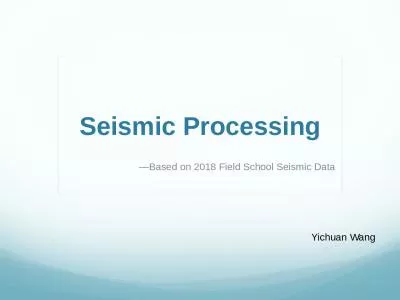PPT-Post Seismic Bridge Inspection
Author : conchita-marotz | Published Date : 2017-09-03
Abutment Approach 10 Steps of Assessment Check Approaches Check Rails Check Expansion Joints Check Wingwalls Check Abutments Check Bearings Check Girders
Presentation Embed Code
Download Presentation
Download Presentation The PPT/PDF document "Post Seismic Bridge Inspection" is the property of its rightful owner. Permission is granted to download and print the materials on this website for personal, non-commercial use only, and to display it on your personal computer provided you do not modify the materials and that you retain all copyright notices contained in the materials. By downloading content from our website, you accept the terms of this agreement.
Post Seismic Bridge Inspection: Transcript
Download Rules Of Document
"Post Seismic Bridge Inspection"The content belongs to its owner. You may download and print it for personal use, without modification, and keep all copyright notices. By downloading, you agree to these terms.
Related Documents

